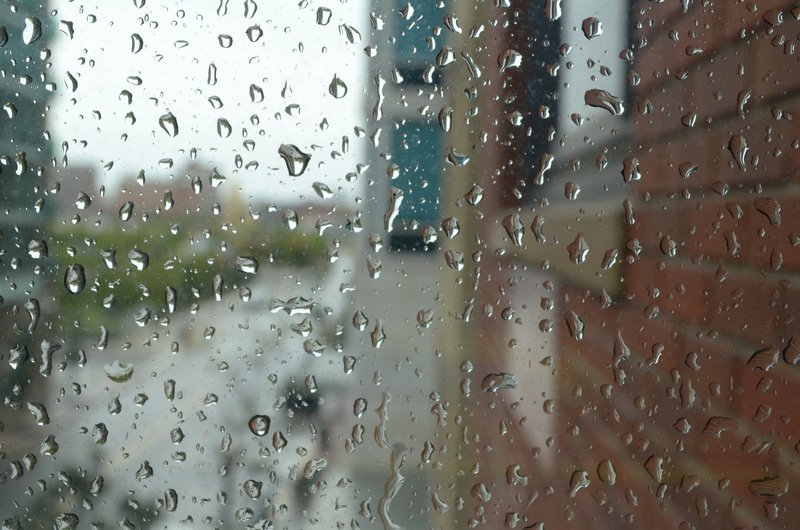Key aspects of home improvement which need your attention before the rain begins!
As spring rolls in at the end of March, average rainfall amounts quickly increase. In fact, in areas like Denver, Colorado, precipitation amounts can go from .49 inches in February to 2.32 inches in May.
This is great news for plants and anyone who finds rain calming. But it’s not-so-great news for homeowners who haven’t sufficiently prepped their buildings for heavy spring showers.

Water damage can be more than a small inconvenience; it can be expensive to repair. The best solution is prevention. Here are a few strategies you can take to better weatherproof your home this season.
Read Also:
Your gutter system is one of your home’s most basic defenses against heavy rains. There are several steps you should follow on a regular basis to ensure your gutters are working as intended.
Clean out any debris accumulation. Fallen leaves and branches can clog your gutter system, reducing its efficiency and, in severe cases, allowing water to seep into the interior of your home.
Check for signs of wear and tear. This could include loose gutter portions and leaks. Even small weaknesses can eventually give way to larger issues later. Use silicone caulk to repair leaks and use screws to better secure loose portions. Give your downspouts the same level of attention and care.
Make sure that once the water is expelled from your downspouts it’s directed safely away from your home. You don’t want to see it pooling around your property and harming your foundation. Use extenders to ensure the water is carried off a good distance.
Concrete repair is one of the most crucial parts of weather-proofing your home. You’ll discover that even the best quality concrete tends to crack over time. And it’s best to take care of deep cracks that allow water to penetrate and pool in the home’s foundation. In severe situations, this can lead to excess moisture in the basement. Leaks might even become apparent after heavy bouts of rain.
For small cracks, you can generally remedy the problem with concrete caulk. When dealing with deeper cracks, you should consider using a concrete patch. Or you can call in a professional before moisture seeps further in and causes more damage.
The lifespan of a roof depends on the materials used to make it. Slate, copper, and tile will last over 50 years, according to U.S. News & World Report. On the other end of the spectrum, you can expect an asphalt shingle/composition to have a lifespan of roughly 20 years. That might seem impressive, but severe weather can easily shorten those lifespan estimates. You’ll need to regularly inspect your roof for damage, such as fallen shingles.
In addition to repairing roof damage, there are numerous ways to bolster your roof’s defenses against rain. Water diverters and catchment systems are two possible options, depending on your specific needs.
Windows and doors have to deal with lots of movement – constant opening and closing. Wear and tear around the seals can give rainwater an opportunity to seep in. Repair any gaps in your weather stripping and use caulking to address places where siding meets a window or door frame.
If your windows are old, you might want to consider having them replaced entirely. Not only will this help keep out the rain in the spring, but it’ll also be useful when winter comes around again. A significant amount of heat is lost through inefficient windows, which then contributes to higher heating bills.
One more thing to consider is how well your home’s exterior paint is holding up against the elements. If the answer is, “Not so well,” grab some oil-based primer sealer and paint. You’ll also need other standard painting tools like a scraper and some brushes. Since you’ll be working with oil-based substances, you can cut down on cleanup time by using disposable painting tools.
Take a stroll around the house and check for damaged paint. If you see any spots that are peeling or bubbling, scrape off the paint and sand the area down to a flat surface. Apply primer and then a layer of paint. Why bother priming the area? It creates a more secure barrier. If you put new paint on top of old paint, you’ll likely find yourself repairing the same spot again in the near future.
Whether you need to use all of these strategies or not, these are some of the most important aspects of your home to inspect before the rainy season starts. A check glance at these areas now can save you a headache later on.
Find the ideal prayer mat for a deeper spiritual experience with our guide on materials,…
Avoid costly damage with expert tips on preventing and fixing bad plumbing. Protect your home…
Discover why Chesterfield sofas are ideal for seniors: effortless use, ultimate comfort, easy maintenance, and…
In the realm of interior design, the quest for striking yet versatile elements often leads…
Sydney's plumbing industry is a vibrant and essential sector, offering numerous opportunities for skilled professionals.…
Congratulations! You just bought your first home. Now comes the exciting (and maybe slightly overwhelming)…